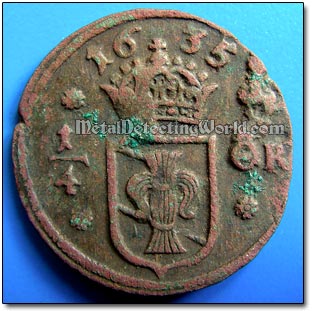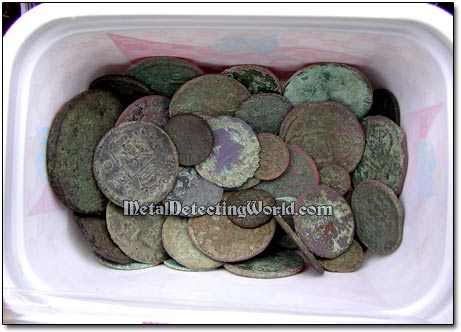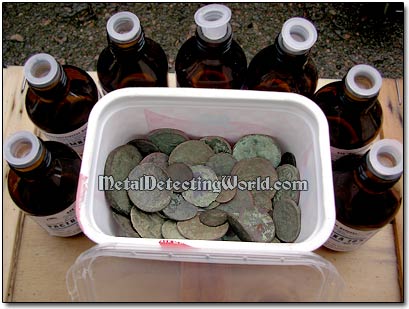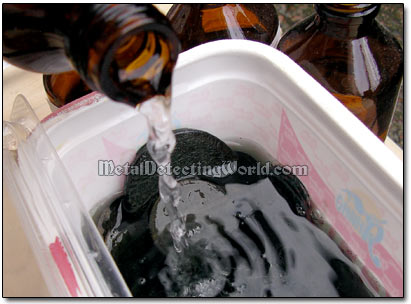Cleaning Copper Coins - Tutorial, page 2
(...CONTINUED from previous page)
Fast Method for Cleaning Copper Coins: Step 3
3) Immerse Coins into Ammonia Solution Bath
Immersing copper coins into 10% Ammonia (NH4OH) solution will remove the coins' patina - basic copper sulfate, false patina and dirt incrustations that are easily dissolved by Ammonia. Thus, removing the natural patina will leave the coins red and less attractive. Then if artificial patination follows and it is done right, the coin's adequate appearance can be achieved; however, it is a tricky task. That is why, before immersing coins into highly reactive Ammonia solution, you should examine each coin closely and decide whether it should be depatinated or not.
For example, a dug copper coin shown in a picture below underwent cleaning steps 1 and 2 and, despite a few specks of green crust on its surface, shows nice relief, and naturally appears attractive. Of course, this coin could undergo further treatment and then look like an undug coin, but even for now it looks quite presentable, so it should be excluded from this treatment.

As for the green specks of crust, they should be examined for they could be either harmless verdigris (they could be mechanically removed with a toothpick or bamboo skewer) or the signs of harmful "Bronze Disease" that should be cured immediately (see details here).
After being dried with cloth or napkins, the copper coins are put into a container that must have a tight lid.

Place all bottles with 10% Ammonia solution at hand and loosen their caps, so you can fill the container with solution as quickly as possible.

While filling up the container with Ammonia solution, try to avoid inhaling the Ammonia fumes as they can make you dizzy. This procedure should be carried out in a well-ventilated room or, better - outside the house. The coins must be completely immersed.

The process of chemical reaction begins immediately and is evidenced by changing color of the solution, from clear to dark-blue or violet. Theoretically the coins are immersed for a few minutes or continually taken out, soaked with several changes of water and brushed to prevent complete loss of coins' patina resulting in turning all coins red. In this method, the copper coins must be completely depatinated (they all should be red) before the next step is taken.
The coins can be soaked in Ammonia solution for 10-20 minutes, immersion time is not a factor in this case. When the copper coins are taken out, the Ammonia solution is rinsed off with water. To keep the coins wet until they, one by one, get brushed, place coins in a container filled with water.